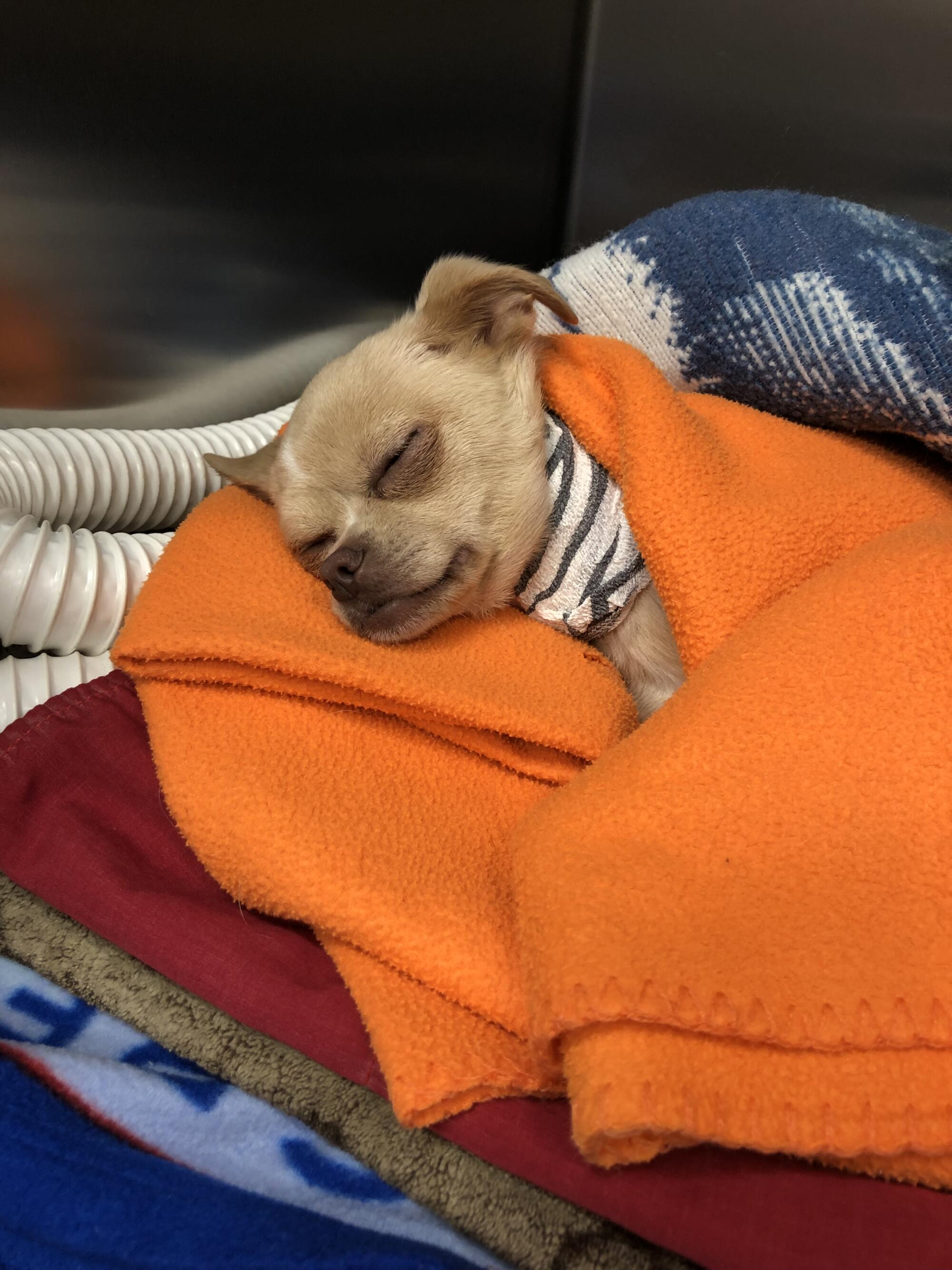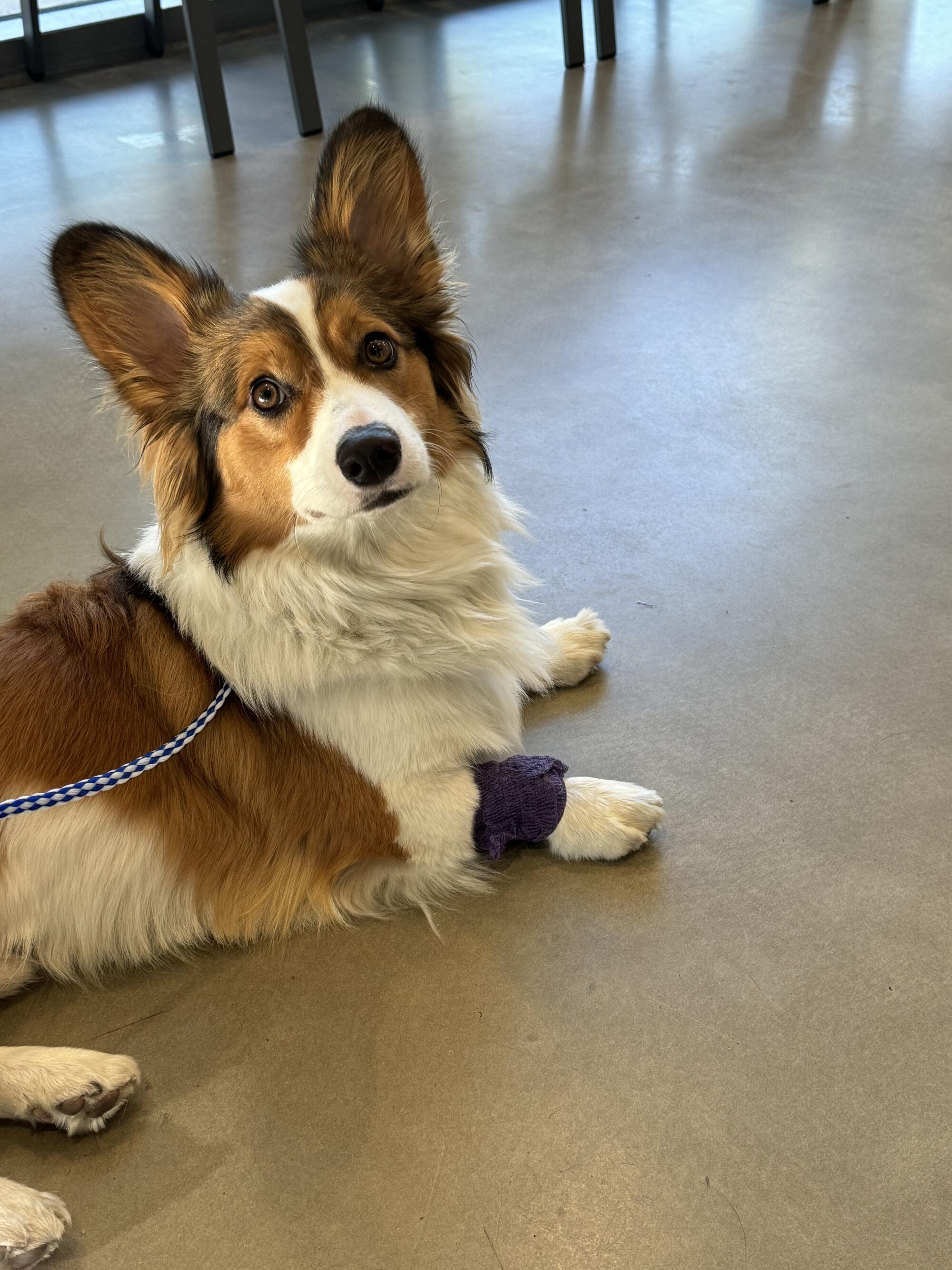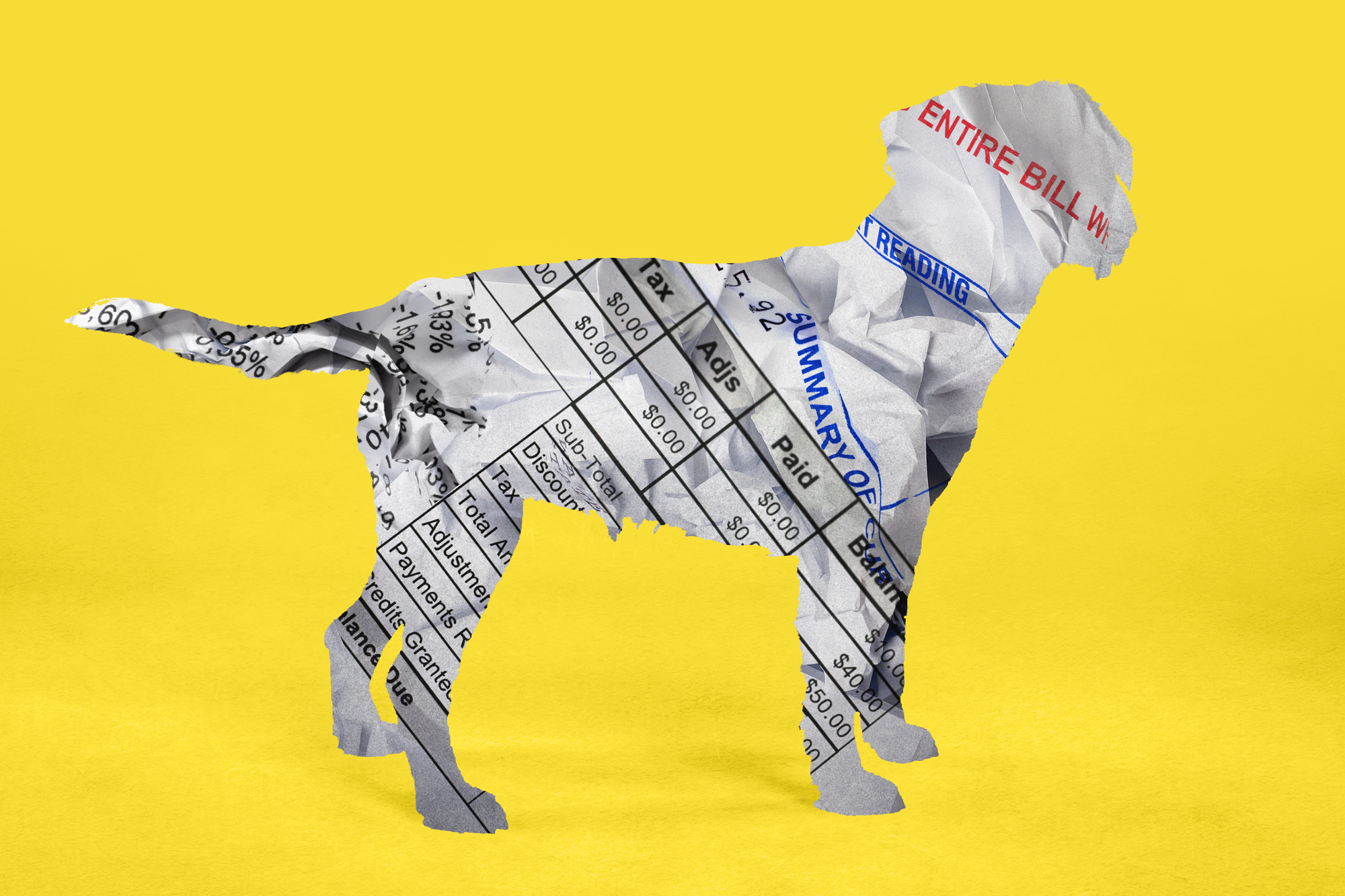Two things are certain when it comes to pet parenting: 1) your beloved furry being will one day need to visit the vet and 2) the cost of veterinary care is rising, increasing more than 60% over the past decade, according to a recent New York Times report. report.
Stacie Straw of Long Beach, California, spent about $30,000 in 2022 on her rescued English bulldog, Blanche, most of which she paid for with an interest-free CareCredit card, she said in response to a Times survey asking readers about veterinary expenses. The cost was due to the “unfortunate confluence,” she said, of the dog needing anterior cruciate ligament surgery and then developing mast cell cancer. Ultimately, Blanche died after several months of treatment.
“I have a lot of empathy for vets because they do the best they can,” Straw said in a later interview. “But it’s really difficult and expensive for most people – it’s hard to spend $100 to take your dog to the vet just to find out if there’s a problem. That’s not pocket change. And you may have to make compromises in your spending decisions to [pay for] that.”
Blanche, an English bulldog rescued by Stacie Straw.
(Stacie straw)
Rising veterinary costs aren’t necessarily the fault of family veterinarians. A combination of factors in the industry is driving up veterinary bills. Medications and vaccines are more expensive than ever. So is the cost of staffing veterinary offices, rent, utilities, and medical equipment. Because there are now more advanced medical technologies and treatments for pets (MRIs, allergy testing, even acupuncture), you often have to charge more. And the continued corporatization of independent veterinary practices (where big companies seek to maximize profits) is causing costs to skyrocket.
In addition to readers who have emptied their pockets at the vet, we heard from more than two dozen veterinarians from around the country responding to our survey, nearly all of them citing the exorbitant cost of their veterinary school tuition. Many of them also noted that veterinarians have a higher suicide rate than the general population — between 2.1 and 3.5 times higher, according to a 2019 study from the Centers for Disease Control and Prevention.
Dr. Jessica Bachmann of Ira, Vermont, highlighted her “eight-year, $400,000 education” to become a veterinarian.
But an industry in crisis doesn't make caring for our pets any easier. If you're suffering from the outrageous cost of veterinary care, take comfort in knowing you're not alone. Here's what some Times readers had to say on the issue.

Luna, the chihuahua-pug dog rescued by Raquel Cypert.
(Raquel Cypert)
Raquel Cypert y Luna, Upland, CA
Highest Veterinary Bill: $3,800 — after spending $800 the day before on Luna at the vet.
What happened: “Luna became very lethargic and was vomiting one day. I took her to our regular vet and they ran some tests and gave her some fluids and said it was probably a stomach bug and sent us home. She spent the night vomiting and having seizures. The next morning I took her back to the vet who said she could be put down or she could go to an emergency hospital.
I put myself on the red line [my] Audi went to the hospital a couple of times and we ran to where they were waiting for us. The vet called us into the room about 20 minutes later and said she had Addison’s disease, which is a deficiency of her stress hormones, and that she would need emergency medications and IV fluids and would need to stay overnight in the hospital to stabilize her. After paying $3,800, we got our baby back.”
The result“He needs monthly injections and daily medication, but his condition is quite manageable.”
Are there cheaper alternative care options? “Because I'm a nurse, I can give him the injection myself, so I save about $1,000 a year by avoiding monthly visits to the vet.”
William G Keiner and his dog, Los Angeles
Highest Veterinary Bill: The $400 quickly rose to $5,000 “before we were forced to refuse treatment.”
What happened: “Our dog, who was about a year old, got off his leash and crashed into a car. Since he’s a rescue dog who had distemper, he doesn’t qualify for pet insurance. So when we took him to the emergency vet, we were presented with a series of increasingly higher quotes… before we were forced to decline treatment. Basically, they brought our dog in, quoted us a price to evaluate him and give him pain medication. They evaluated him and gave a higher quote. They came back and gave another higher quote. This happened two or three times before we had to decline treatment. We still ended up paying close to $2000. The vets were unable to reset the broken leg or splint it properly.”
The result:“We opted for painkillers to get through the weekend. [and] “To see a non-profit veterinarian.”
Are there cheaper alternative care options? “We took our dog to a non-profit vet who worked with the rescue group we fostered him for. They treated him, but he didn’t do well. The pins they put in his leg became infected. We learned that this vet was [ultimately] closed by the city. We finally found an independent vet who agreed to a reasonable fee. [price]. There are still thousands of dollars left to remove the pins, which worked.”
Misty Dailey and Elfin, Spring Branch, Texas
Highest Veterinary Bill: $2,200 (in Sacramento, California, 1992)
What happened: “Gastric torsion. Dogs with very barrel-chested bodies, such as Dobermans, Boxers, Great Danes, etc., can have a tendency to gulp down their food. If you don’t dilute them with water or elevate their bowl so they don’t have to bend over as much, this causes too much air to get into their gut. Their gut starts to expand (like a horse with colic) and their intestines twist, which kills them. I was going to spend a weekend in Lake Tahoe and saw that my Doberman was bloated and looked like a chubby Shetland pony. My vet saw Elfin, whisked her away, and took her in for an x-ray. She said she’d never seen a dog that bloated and still alive. They anesthetized her, opened her belly, let the air out, and then basically sewed her organs together on the side so that if it ever happened again, she wouldn’t twist.”
The result: “I started picking up all of my dogs’ dry food off the floor so it wouldn’t happen again.”
Are there cheaper alternative care options? “No. I was grateful to have paid the $2,200. They saved her! Elfin has [since] “gone to heaven.”

Lola, Michelle Min's newly adopted dog.
(Michelle Min)
Michelle Min and Lola, San Gabriel Valley, California
Highest Veterinary Bill: More than $1,300 (in 2013)
What happened: “An ultrasound of the heart [was] “I needed a newly adopted ADA dog (by doctor’s order), who I absolutely adored, and she saved my life. I was on a fixed income and pet insurance refused to cover her, despite collecting premiums. It turned out she had severe congenital heart problems. She had to be on lifelong medications (about five a day) and an expensive, home-cooked diet of chicken breast, rice, and vegetables for her entire life. She was worth every penny, there was nothing I wouldn’t have done for her, but I can’t go through this again. It’s too painful, not to mention the expense.”
The result“He only confirmed the vet’s diagnosis before the test. He had already been given medications and supplements to treat his heart problems. No changes or adjustments were made after the test.”
Are there cheaper alternative care options? “No. Properly caring for your pet is extremely expensive, even if it serves the purpose of saving her life as an ADA animal. This can be the hardest part. Because I am a disabled person on a fixed income, I sacrificed (voluntarily) for years so that she could receive proper care.”

Daniel Smith-Ramirez's dog, Legoshi.
(Daniel Smith-Ramirez)
Daniel Smith-Ramirez and Legoshi, Kitchen, CA
Highest Veterinary Bill: $2,300 with $4,000 on the horizon.
What happened: “This month, my dog has had stomach problems. He had to be treated with five different medications and hospitalized for three days. He may also need an endoscopy. [He’s] I have been diagnosed with an ulcer, but [the] exploratory endoscopy [will] confirm.”
The result:“The first set of medications was not [helpful]So now we are trying stronger medications.”
Are there cheaper alternative care options? “This is actually the cheapest one in the area. We were told that other hospitals would charge around $10,000 to $20,000.”
Juan Chavez and sugar, Pasadena
Highest Veterinary Bill: $10,000
What happened: “Our dog Sugar was hospitalized for pancreatitis. She had to stay in a veterinary hospital for 24 hours, for a week.”
The result:“They put her to sleep after seven days.”
Are there cheaper alternative care options? “No. Our neighborhood is known for good vets, but prices are high. I have no illusions about getting cheaper vets, but maybe we should look outside our location using recommendations from Reddit or NextDoor.”

Shelley Keith's dog, Olive.
(Shelley Keith)
Shelley Keith and Olive, Sherman Oaks, California
Highest Veterinary Bill: $3,000
What happened: “My dog was having seizures and I took her to the emergency room at a veterinary hospital.”
The result:“Lots of diagnostic tests but nothing bad.”
Are there cheaper alternative care options? “No.”
Jamie Tran and Grady, Santa Maria, California
Highest Veterinary Bill: $12,149.43
What happened: “My dog, who I had adopted just five days ago, suddenly became very ill. He was in such critical condition that they weren’t sure he would survive the night. He remained in critical condition for the next few days with no definitive diagnosis. He was treated for possible sepsis, anaphylaxis and leptospirosis.”
The result“I know that if he had still been at the shelter, they would have made the decision to let him go. Because they treated him for a myriad of things based on his symptoms, they were able to stabilize him. When he was discharged, they provided him with seven medications to continue for two to three weeks afterward. Interestingly, they discharged him saying that there was nothing more they could do and that we would have to continue the treatment at home and see if he continued to improve. I didn’t leave with the utmost confidence that he would make a full recovery. I don’t regret paying to save his life, but it’s something I will continue to pay for for a long time.”
Are there more affordable alternative care options? “No. The cost of veterinary care is quite high. Unfortunately, where I live, the options for care are quite limited to non-existent. They probably wanted to move him somewhere else to see a specialist. The options for that were an hour or two away, as there are no specialists available anywhere closer. If your pet needs a specialist, chances are he is not well enough to travel long distances to get the care he needs.”












